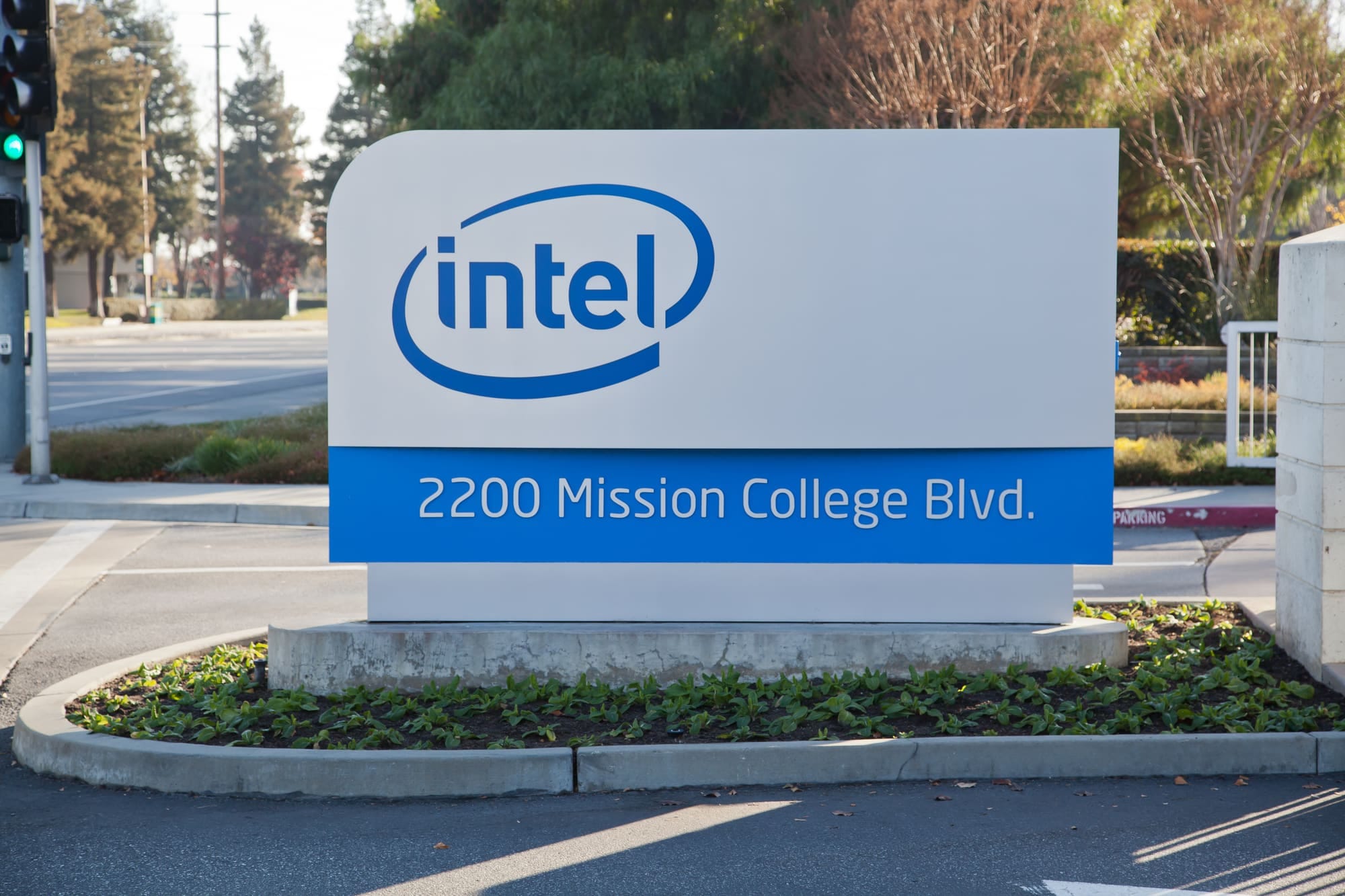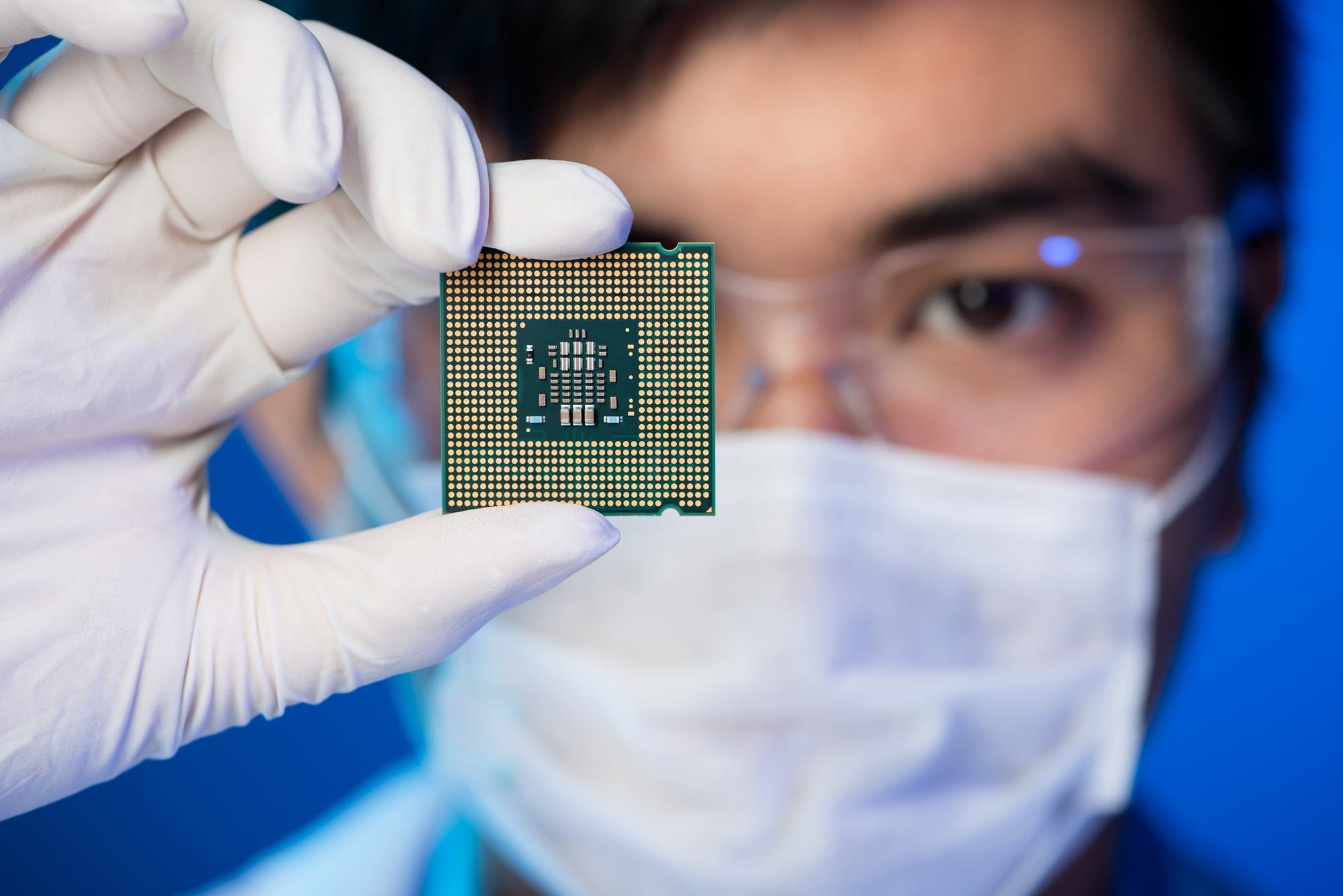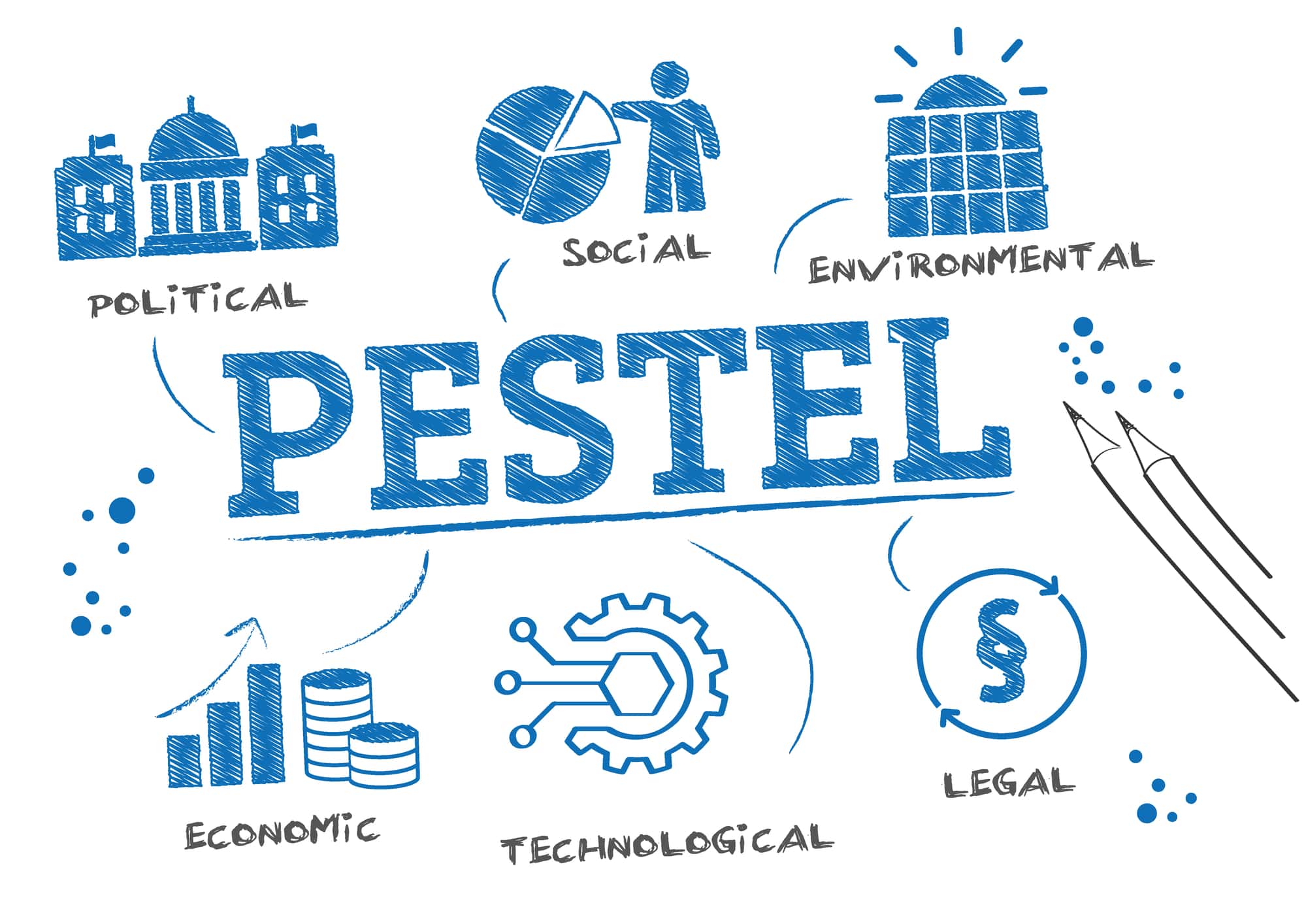If I ask you to name one of the leading manufacturing companies of semiconductors, you will probably say Intel. Intel is one of the oldest and biggest companies that manufacture chips and semiconductors.
Besides manufacturing semiconductors, Intel is also famous for manufacturing microprocessors. Microprocessors are often said to be the brains of a computer, and Intel's x86 architecture is the foundation for many desktops and laptops.
You might be wondering why we are discussing Intel today. We are discussing Intel's operations because today's article is about Intel.
In today's article, we will conduct an Intel PESTLE analysis and discuss how different external factors impact Intel's operations.
Previously, we have conducted a SWOT analysis of Intel. However, before proceeding further and conducting the PESTLE analysis of Intel, let's take a look at the history of Intel.

Intel was founded in 1968 by Robert Noyce and Gordon Moore. Their mission was to manufacture semiconductors focusing on memory chips in the earlier stages.
In 1969, Intel launched its first product, a random-access memory (RAM) chip. Intel's first product became a huge success in the market. A few years later, Intel launched the 8080 microprocessor.
This microprocessor became a milestone in the history of computers. It provided the foundation of early microcomputer systems and personal computers.
In 1978, Intel launched an 8086 microprocessor and x86 architecture. The microprocessor features x86 architecture, which became the foundation for Intel's microprocessors. People loved Intel's microprocessors, and they considered Intel to be a company that was focused on R&D.
In the coming years, Intel kept launching more advanced microprocessors, which paved the way for modern computing. Later, in 1993, Intel launched the Pentium processor. This processor gained a lot of success.
In 2006, Intel introduced multi-core processors such as Core 2 Duo. This processor is due to its improved processing power and efficiency.
Later, Intel launched more advanced processors that had high energy efficiency. In 2011, Intel focused on the ultrabooks and mobile market. It promoted thinner and more power-efficient laptops that contained Intel processors.
Over the years, Intel kept increasing its market share and customer base. The brand became famous for delivering quality products.
Intel soon became the market leader in the data center market. The tech company further invested in Artificial Intelligence and edge computing technologies.
Currently, Intel is one of the biggest semiconductor and microprocessor-producing companies. Intel is ranked 62nd on the Fortune 500 due to its operations.
The tech company has a large customer base, which helps it generate huge sums of profits. Intel's products are sold in more than 120 countries. In 2023, Intel generated a revenue of $12.9 billion.
Besides generating huge profits, the tech company provides employment to more than 131,900 employees across the globe. Now that we have discussed the history and operations of Intel, let's proceed further and conduct the PESTLE analysis of Intel.
Before proceeding with the PESTLE analysis, we need to discuss what PESTLE analysis is. PESTLE analysis is a tool that highlights how different external factors impact the operations of a business.
In today's PEST analysis, we will look at how different external factors impact the operations of Intel. Let's proceed further and examine the impact of Political factors on Intel.
Political Factors That Affect Intel
Political factors are the factors related to the political environment and government policies. In this section, we will discuss how different political factors impact Intel's operations.
Government tax policies impact Intel's operations significantly. Suppose the government imposes high taxes on tech companies, including Intel. In that case, Intel's profits will fall, and the company will struggle financially.
However, suppose the government decides to support the tech companies by providing subsidies and lowering their tax rates. In that case, Intel will flourish since the company will retain more money as its profits.
Other than the tax rates, government import policies also have a great impact on the operations of intel. If the government has strict import policies, the tech company will suffer because Intel imports many raw materials and machines from different parts of the world.
On the contrary, if the government has relaxed import policies, for example, the import duty is less, then this will benefit Intel.
Furthermore, political stability also impacts Intel. If a country is politically stable, the demand for Intel products will be high in that country. On the contrary, if a country is experiencing political instability, the demand for Intel products will be less in that country.

Economic Factors That Affect Intel
Economic factors are factors related to the global or domestic economy. In this section, we will discuss how the economic environment impacts Intel's operations.
Intel is affected by the economic conditions of a country. If a country is experiencing an economic boom, the people of that company will have more disposable income. Hence, they will have more money to buy Intel's products.
This is why economic booms benefit Intel because, in these periods, Intel's sales increased. On the other hand, when a country is undergoing an economic recession, the people in that company have less income to spend. That is why the demand for Intel products falls during times of recession.
Besides that, interest rates have a great impact on Intel. When the interest rates are low, the borrowing costs are less, so it is easier for Intel to take loans from the banks and invest that money in growth purposes.
However, when the interest rates rise, it gets difficult for Intel to take loans. As a result, it gets difficult for Intel to borrow money from banks and reinvest it in the business.
Other than that, exchange rates also have a great impact on Intel. Due to the fluctuations in the exchange rate, the price of Intel's imports fluctuates. As the exchange rate fluctuates, Intel's profits fluctuate, too.
Social Factors That Affect Intel
Social factors highlight the social and cultural factors that impact the operations of a business. In this section, we will examine how different social factors impact Intel.
Technological awareness in a society varies. Some societies are more technologically aware, while some are not. In societies where people are more tech-savvy, Intel sales would be higher than those with low technological awareness.
Moreover, the demographics of society greatly impact Intel's sales. Demand for Intel products will be high in societies where people are young and have a high income.
On the other hand, in societies where the majority of the population is elderly and has low-income levels, the demand for Intel products will be low.
Besides the demographic factors, social trends also impact Intel significantly. In societies where online learning is a trend, the demand for laptops and computers is high.
As a result, the demand for intel products is also high in those societies compared to societies where people don't use computers that much.
Furthermore, the literacy rate also impacts Intel's operations. In societies with high literacy rates, people tend to use computers more. As a result, the demand for Intel products will be high in societies with high literacy rates.

Technological Factors That Affect Intel
Technological factors in a PESTLE analysis take technology and innovation into account. In this section, we will look at how different technological factors impact Intel's operations.
Rapid expansions and technological advancements in the semiconductor industry provide an opportunity for Intel to make more technologically advanced semiconductors.
If the semiconductor industry weren't technologically advanced, it would not have been possible for Intel to manufacture technologically advanced semiconductors.
Moreover, emerging technologies also impact Intel's operations. Recently, several technologies have emerged, such as AI. Intel is adopting these latest technologies to improve the quality of its operations.
Besides that, advanced supply chain technology, including the latest inventory software, helps Intel manage its production and inventory.
Furthermore, as the Internet has penetrated every country, the number of Internet users has increased significantly. This allows Intel to sell its products through an online store.
As social media usage increases, Intel can also market its products on social media. By advertising products on social media, Intel can reach more potential customers, so its sales can ultimately increase.
Moreover, as online learning platforms have emerged, people are pursuing online learning. Due to this, Intel's sales are increasing.
Legal Factors That Affect Intel
Legal factors in a PESTLE analysis account for the legal framework in a country and the laws present in a country. In this section, we will discuss how different legal factors impact Intel.
Labor laws have a significant impact on Intel's operations. The company must pay attention and ensure that all its employees are treated equally regardless of skin color, gender, and ethnicity. In case of discriminatory practices, Intel will face heavy penalties for violating labor laws.
Besides that, the company has to ensure that its products don't have a similar design or concept to any other product. If Intel's products are similar to any other brand, Intel can be sued for intellectual theft.
On the other hand, intellectual property law also provides safety to Intel since it restricts any other business from copying Intel's designs.
Moreover, Intel has to ensure that its users' data is protected and safe. If the data of Intel users is leaked, the company might get sued for violating the data protection laws. As a result, Intel's reputation will be damaged, and the company will have to pay heavy fines.
Environmental Factors That Affect Intel
Environmental factors are the factors that are associated with the environment. This section of the PESTLE analysis will examine how different environmental factors impact Intel's operations.
Intel is accused of making semiconductors and microprocessors that consume energy. Intel has to manufacture products that are energy efficient. By producing such products, less energy will be consumed, and the company will play its role in restricting the energy demand.
Moreover, Intel is currently working on shifting to renewable energy completely. This will positively impact the environment since conventional energy produced by burning fossil fuels causes the emission of greenhouse gases.
When Intel will shift completely to renewable energy, the demand for conventional energy will fall. Hence, the emission of greenhouse gasses will fall.
Intel is taking steps to preserve the environment since it is affected by natural disasters due to climatic changes. Natural disasters disrupt Intel's supply chain, resulting in the company's suffering.
Moreover, storms, floods, and forest fires damage Intel's infrastructure. As a result, the company suffers financially. Other than that, Intel's manufacturing plants require a constant water supply.
However, due to climatic changes, the water table has dropped in several parts of the world. Due to this, the company has to inspect the location before establishing its manufacturing plant there.

Intel PESTLE Analysis: Final Word
Intel is a US-based tech company that focuses on manufacturing semiconductors and microprocessors. Intel is one of the oldest tech companies in the world. The company was established by Robert Noyce and Gordon Moore in 1968.
It launched its first product, a random-access memory (RAM) chip, in 1969. The RAM manufactured by Intel was a huge success. In the coming years, the company produced advanced semiconductors and microprocessors.
Intel managed to retain its place in the market even after decades. Intel became one of the biggest tech companies in the world. Currently, Intel is ranked 62nd on the Fortune 500.
The company generates revenue of billions of dollars each year and provides employment to thousands of people across the globe. After discussing Intel's operations, we conducted a PESTLE analysis of Intel.
The PESTLE analysis framework highlighted how different external factors impact the operations of Intel. If you liked this article and want to read more about PESTLE analysis, look at more examples here.










